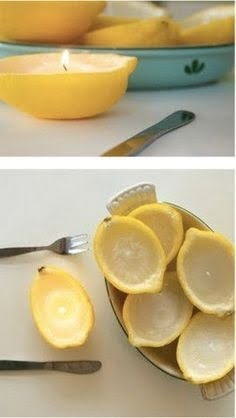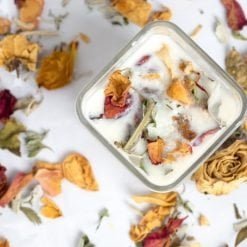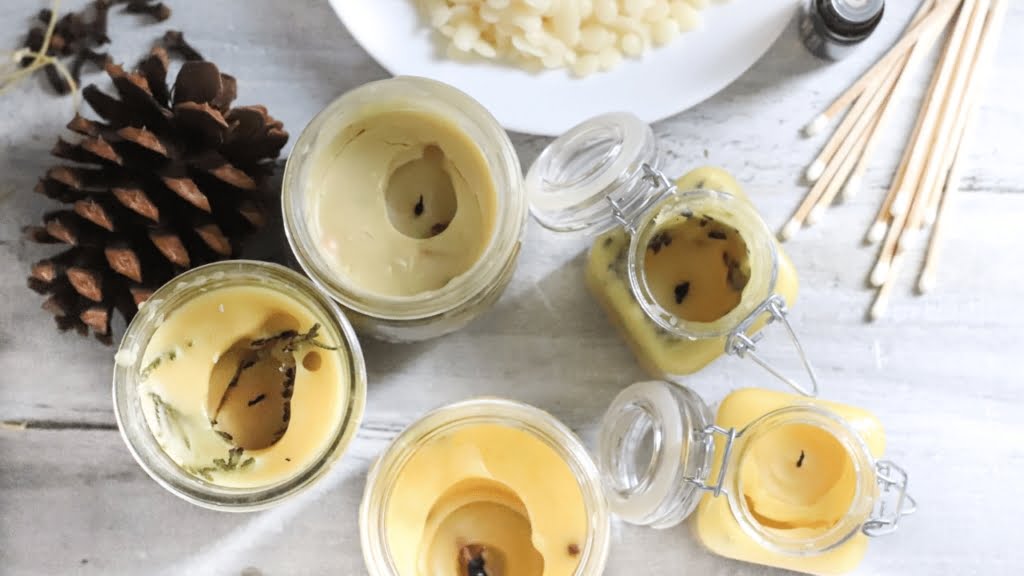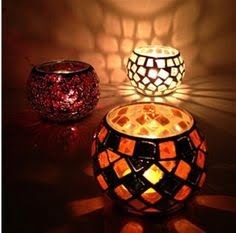Expand on the Introduction
Candle making has a long and fascinating history, dating back over 5,000 years. Early versions of candles were made from natural fat and wax that was harvested from animals or plants like beeswax. During religious ceremonies, candles were often used as part of the festivities. Later on, the development of stearic acid in the 19th century led to more consistent candle production and mass-marketed availability.
Today, candle making remains popular due to its versatility: it is a fun hobby, can be used in aromatherapy to provide calming benefits and soothing fragrances, or even set a romantic atmosphere for dinner. It’s also possible to find antique-style candles with intricate designs or any type of color imaginable. Although candle making may have changed over time, it’s clear why this form of light is still enduringly popular.
In terms of what’s actually needed for candle making: depending on the type that you want to make, you typically need wax (could be soy wax, palm wax, beeswax), a wick (either pre-tabbed or not pre-tabbed), colors for dyeing (which could be liquid colors or natural colors such as spices) and fragrance oils for scenting if desired. Additionally molds may be needed for certain shapes. A double boiler can also be useful when melting down different ingredients together into one cohesive material.
Include a Discussion on Candle Wax Types
The type of wax you choose for your candle will depend on the intended purpose and the desired burn time. Paraffin wax is one of the most popular types of wax used in making candles, as it produces a clean burning flame with a good scent throw. It also melts quickly which makes it ideal for container candles. One disadvantage of paraffin wax is that it’s not environmentally friendly due to its petroleum content.
Soy wax has been gaining popularity in recent years due to its eco-friendly and renewable source. It releases far less soot when burned than paraffin, producing a cleaner flame – which makes it perfect for container candles. Soy wax also usually costs more than paraffin and has a slower melt point so it takes longer to set up and may be difficult to get the design you want from molds or tins.
Beeswax is another popular choice for candlemakers because of its pleasant aroma, long-lasting burn, and attractive honey-hued color. Unlike paraffin or soy waxes, beeswax does not require any additional additives as a stiffener, however it can be quite expensive compared to other types of waxes.
Gel wax is commonly used for creating unique illusion candles – like reed diffusers under water – as it’s much more transparent than other types of candle waxes while still having an excellent scent throw. Gel candles provide a much longer burn time than traditional solid wicks but can be costlier when buying them in bulk quantities.
Explain the Purpose of Different Candle Supplies
Wicks – Wax candles need wicks to be able to burn, and the type of wick used will affect how well the candle performs. Wicks are composed of a number of strands that serve as a catalyst for the heat generated during combustion; wax must reach certain temperatures in order to melt properly, so the wick’s heat conducts through it, melting the wax slowly and evenly. Wicks also provide a means of conveying oxygen down from outside the flame so that combustion can take place within the pillar or container.
Scents and Colors – Scents and colors are added to wax candles to make them look more attractive and stimulate pleasant sensory experiences when they are burned. Fragrances can come in many forms such as essential oils mixed into melted wax. Colors come in either natural pigments infused directly into melted wax or synthetic dyes designed for use with melted wax. Synthetic dyes are also available in pre-mixed color blocks which simply need melting down for ease of use.
Thermometer – A thermometer is necessary when making candles as wax needs to be kept at consistent temperature levels in order for it to reach its desired viscosity during melting. Monitoring temperatures before hand helps determine whether any adjustment may be needed when adding ingredients such as fragrances or colours into the mix, especially if you want your candle scent and colour formulation to burn consistently every time.
Melting Pot – A melting pot is a device designed for melting, heating, or mixing solid materials such as wax in an even semi-solid condition at controlled temperatures (sometimes also referred to as ‘double-boiler’s). This prevents direct exposure of these ingredients on open flames which could overheat them quickly, resulting in discolouring or ruining their scent control properties when added together in candle making applications.
Discuss Safety Precautions
Safety is a top priority when it comes to making candles. The wax used in candle making melts at very high temperatures, and you may be working with open flames, so there are many potential hazards. Begin by ensuring the room you’re working in is well ventilated and free of combustible materials, such as curtains or newspapers. Wear safety glasses while melting wax, as it can splatter, particularly if using double boiler method. Keep long hair tied back and away from any open flames. Ensure all containers used for melting wax are heat-proof, as this material can ignite flammable substances when heated. Always keep a fire extinguisher nearby in case of emergency and never leave an open flame unattended. If pouring molten wax near any electrical outlets, be sure to plug the cords into surge protectors and wear insulated gloves to protect your hands from burns or shocks. Lastly, use caution if melting colored wax, as these materials may produce toxic fumes that are harmful if inhaled.
Provide Tips for Troubleshooting
– Make sure you are using a heatproof container that is suitable for melting wax, such as an old pan or double boiler.
– Make sure to keep the heat low enough to prevent the wax from smoking, and stir it often while melting.
– Be sure to use wick holders inside your molds/containers to hold the wick in place.
– If you can, consider adding a color dye or essential oil to add scent to your candle mix.
– Allow the candles time to cool gradually and allow your poured candles 24 hours before handling them.
– If you notice any candles warping or cracking after cooling, try using binder such as beeswax or soy wax when trying different combinations of waxes or experimenting with additives.
– If your candles have sunken down after cooling, try slicing away some of the hardened wax from around the outside of the candle top to see if this will help level it out.
Highlight the Benefits of Handmade Candles
Making candles at home is becoming increasingly popular, thanks to the expansive range of options- from scented and dyeing techniques for multifarious shapes, styles, and sizes. Not only do handmade candles bring visual appeal, but they also provide many health, environmental, and emotional benefits too.
For starters, making candles from natural materials can offer a healthier option than many store-bought candles. Natural beeswax or soy provides an alternative to paraffin wax which produces harmful chemicals when burned. Additionally, these types of wax are often more sustainable sources as well.
Further, making some of your own candles can be an incredibly rewarding experience that offers emotional benefit too. Crafting something by hand has been proven to decrease stress levels and improve overall wellbeing through the act of making and connecting with nature’s elements. Finally, having homemade candles on display around your home brings a personal touch that you won’t find in any store-bought type!
Provide Resources for Candle Supplies
To make candles, you will need candle wax, wicks, a heat source, and a container to hold the wax. Depending on the type of candle you want to make, you may also need other items such as dyes or fragrances. You can purchase all of these items from a candle supplies store or online. It is recommended to look for suppliers that provide quality materials and offer a good selection for selecting the items needed for your project.
When purchasing wicks, it is important to select the type best suited for the size of candle being made. For example, some candles need single-ply wicks while others require multiple-ply wicks. Make sure to look up instructions on how to size your wick correctly for the best results and do not forget to secure it properly in your candle container before pouring in melted wax.
Additionally, if adding colors or fragrances to your candles make sure they are high quality products designed specifically for use in candles. Keep any finished candles away from draughts and flame sources when storing them until use.

Welcome to my candle making blog! In this blog, I will be sharing my tips and tricks for making candles. I will also be sharing some of my favorite recipes.





